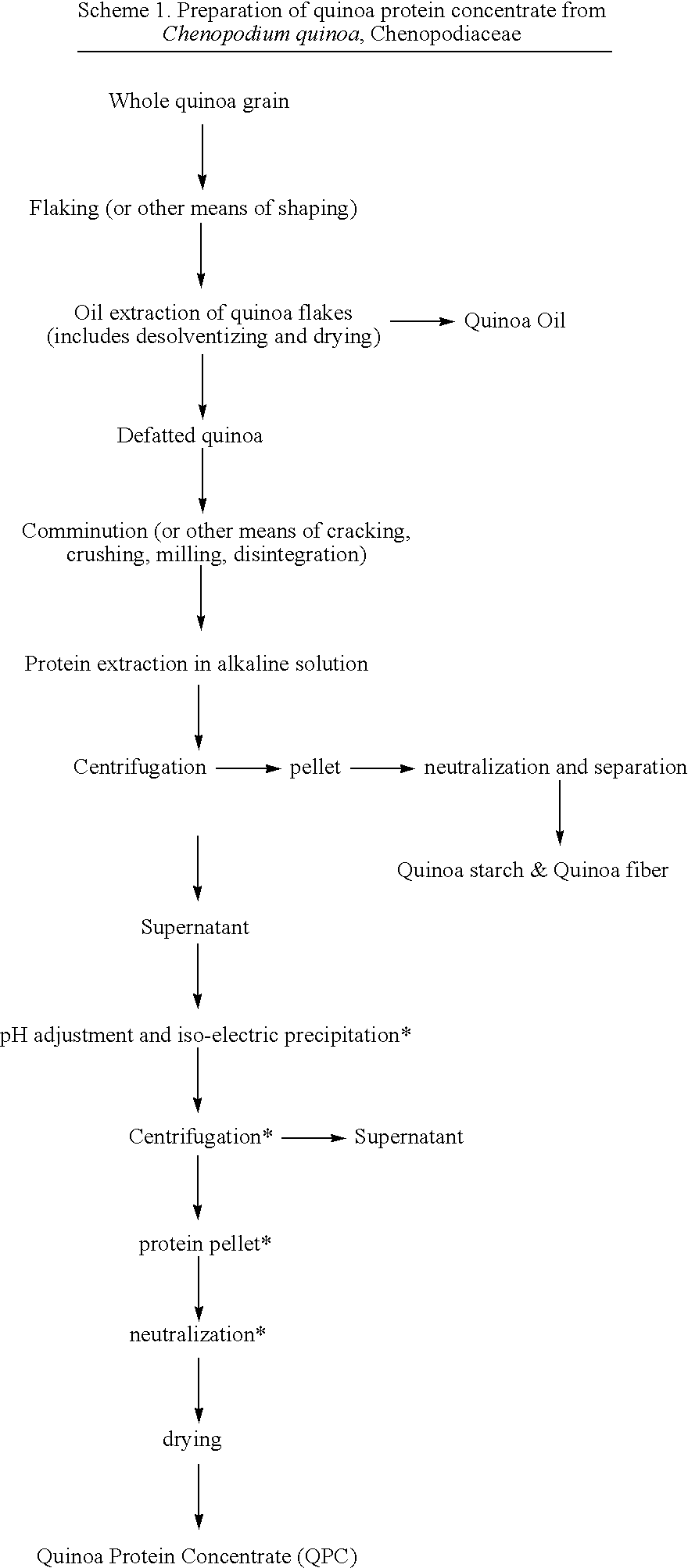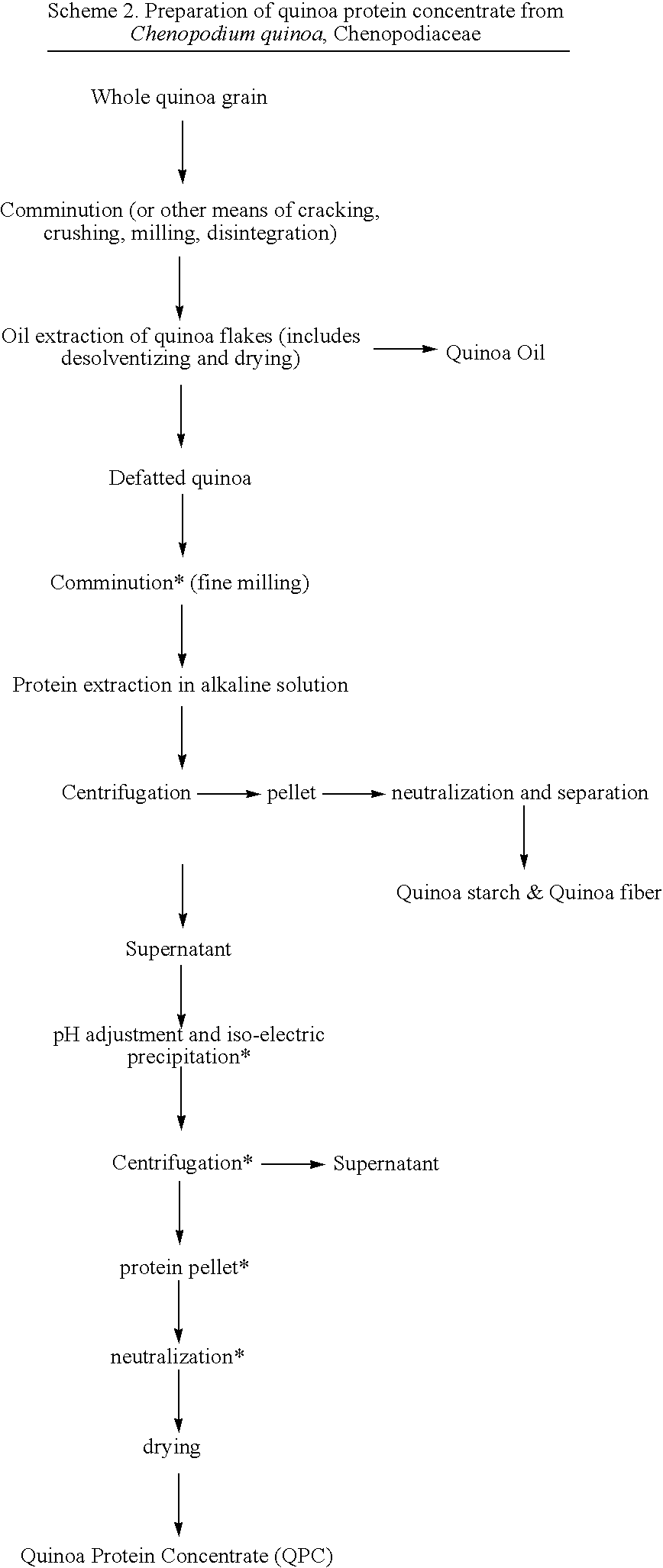Quinoa protein concentrate, production and functionality
a technology of quinoa protein and concentrate, which is applied in the direction of protein composition from vegetable seeds, peptides, plant/algae/fungi/lichens ingredients, etc., can solve the problems of limiting product development, food allergens are a serious concern, and plant proteins are often limited in one or more essential amino acids, so as to reduce fat, reduce water activity, and low protein content
- Summary
- Abstract
- Description
- Claims
- Application Information
AI Technical Summary
Benefits of technology
Problems solved by technology
Method used
Image
Examples
Embodiment Construction
[0013]In general the terms and phrases used herein have their art-recognized meaning, which can be found by reference to standard texts, journal references and contexts known to those skilled in the art. The following definitions are provided to clarify their specific use in the context of the invention.
[0014]The term, “quinoa protein concentrate (QPC)”, as used herein, is intended to indicate the product obtained from quinoa (Genus: Chenopodium, Species: quinoa, Family: Chenopodiaceae) grain (also called quinoa seed, grain-like seed, pseudocereal, and fruit) having a protein content of at least about 50 wt %, preferably of at least about 70 wt %, most preferably of at least about 90 wt %, on a dry weight basis, and is food- and pharmaceutical-grade. The QPC can be obtained by the processes disclosed herein with or without modifications. The protein content is determined by the procedure as described in American Association of Cereal Chemists: “Approved Methods of Analysis,” The Ass...
PUM
| Property | Measurement | Unit |
|---|---|---|
| size | aaaaa | aaaaa |
| pH | aaaaa | aaaaa |
| temperature | aaaaa | aaaaa |
Abstract
Description
Claims
Application Information
 Login to View More
Login to View More - R&D
- Intellectual Property
- Life Sciences
- Materials
- Tech Scout
- Unparalleled Data Quality
- Higher Quality Content
- 60% Fewer Hallucinations
Browse by: Latest US Patents, China's latest patents, Technical Efficacy Thesaurus, Application Domain, Technology Topic, Popular Technical Reports.
© 2025 PatSnap. All rights reserved.Legal|Privacy policy|Modern Slavery Act Transparency Statement|Sitemap|About US| Contact US: help@patsnap.com



